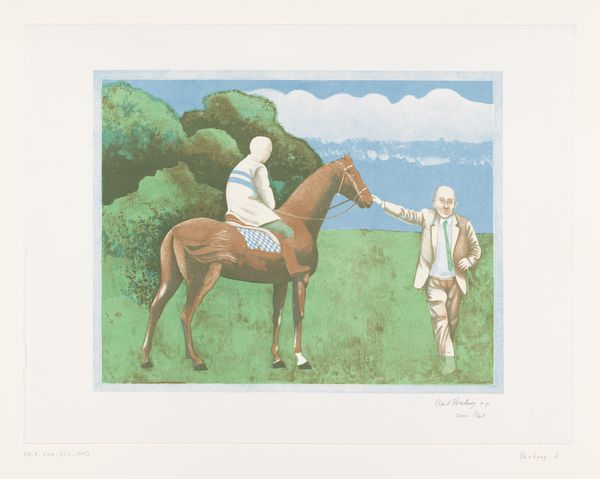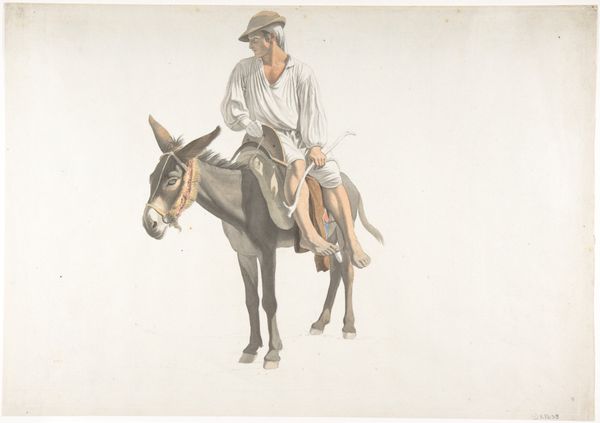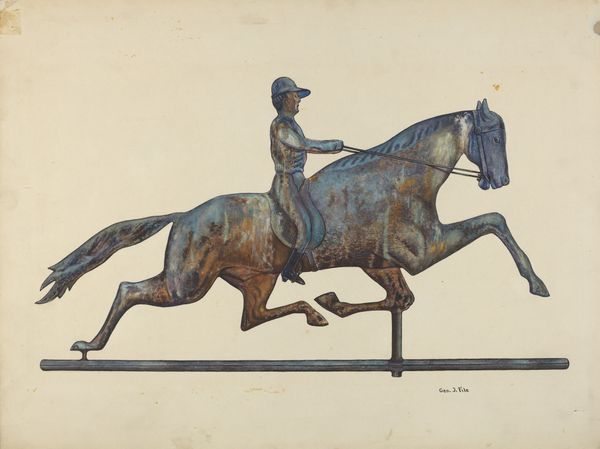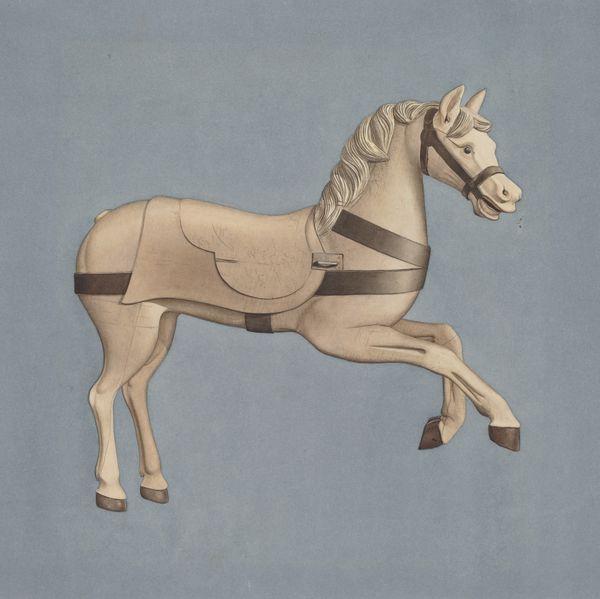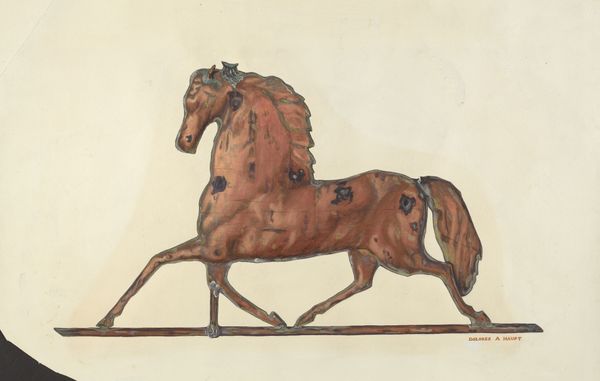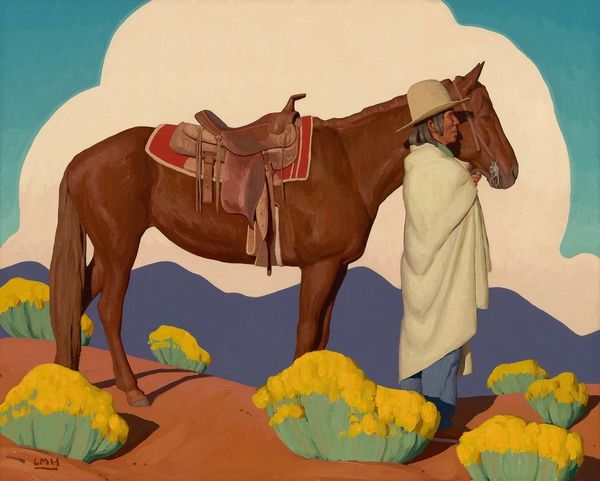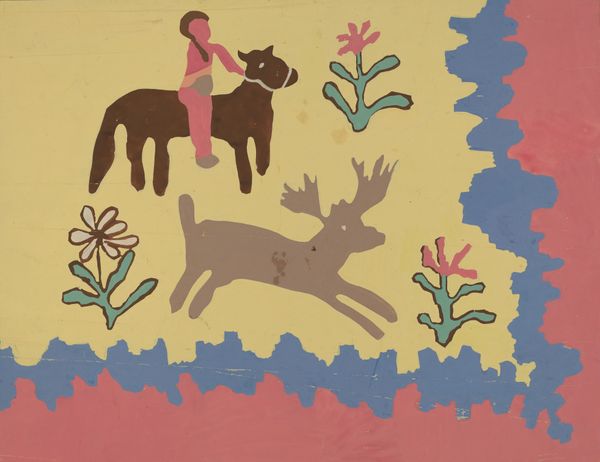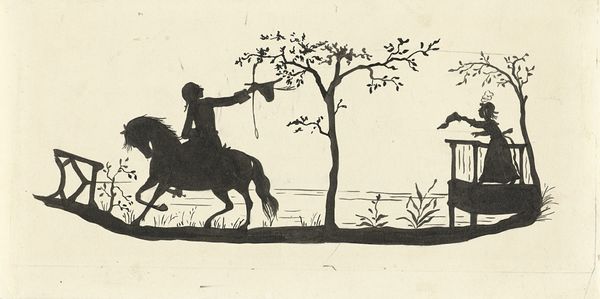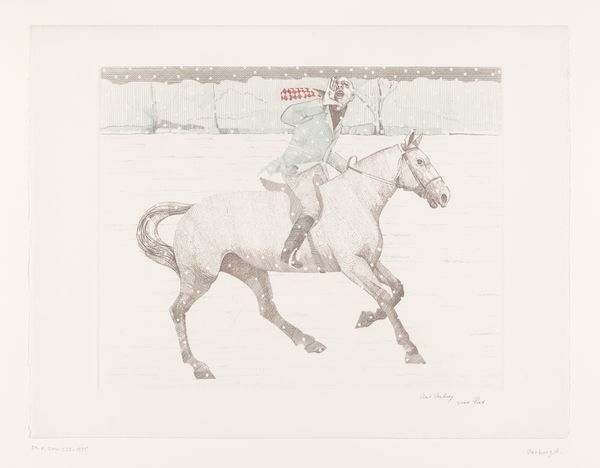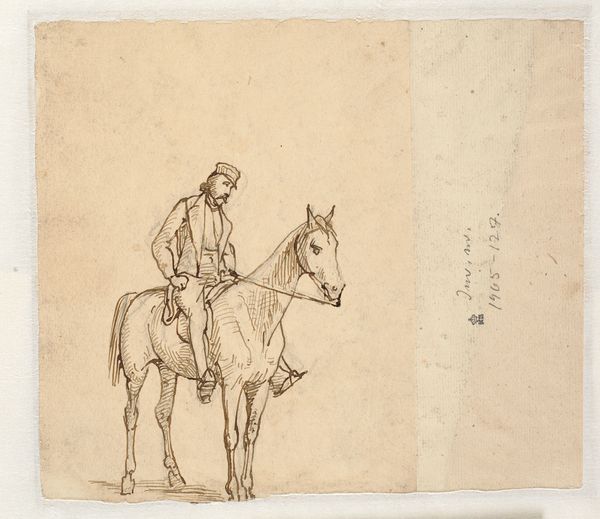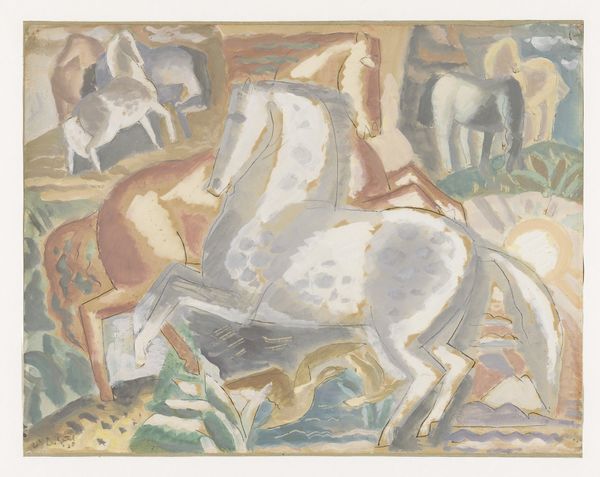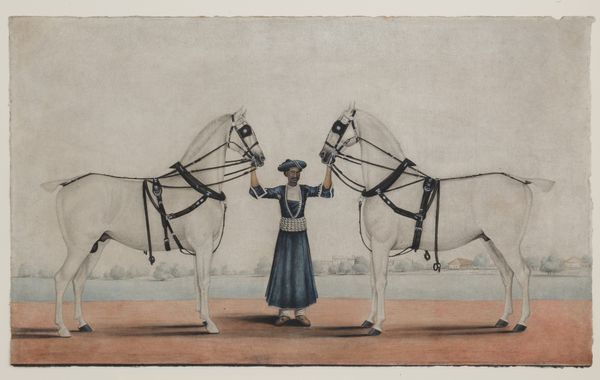
watercolor
#
portrait
#
contemporary
#
green and blue tone
#
landscape
#
figuration
#
watercolor
#
watercolour illustration
#
green and blue
Dimensions: height 515 mm, width 660 mm
Copyright: Rijks Museum: Open Domain
Curator: I’m immediately drawn to the color palette here—that almost pastel-like sky blue and the muted tones of the horse itself. It has a very calming, serene feel. Editor: Indeed. We are looking at Aat Verhoog’s "Ruiter te paard (en profil) en plant", dating roughly from 1965 to 1980. The medium here is watercolour. I’m fascinated by the contrast between the refined, almost classical subject of the horse and rider, and the distinctly contemporary, somewhat flat, application of the paint. Curator: Absolutely. There's something almost childlike in the simplicity of the forms, but then you notice the detailed rendering of the horse's anatomy. Is this intentional? Perhaps drawing attention to class and labor? Editor: Well, observe how Verhoog utilizes watercolour not for blending and realism, but as a tool for layering and creating subtle texture. Notice the dry brushstrokes, the thin washes. This piece subtly dismantles the traditional hierarchy of art materials. Watercolour is often seen as preparatory, yet here it is the final, defining material. It makes us question value ascribed through artmaking practices. Curator: The plant is so striking as well. Not just a botanical illustration but also, a prop in a symbolic play? How much control does the rider really exert? The horse is actively eating from it and seems to disregard the rider. Editor: Perhaps that’s why Verhoog chose that particular view, en profil as the title mentions, emphasizing surface and flatness over depth or illusion. Even the light is even, almost like a photographic studio light. He’s drawing attention to the constructedness of the image itself. It resists being read simply as a 'portrait.' It engages with broader concepts of representation. Curator: This re-evaluation is such an important point. I’m seeing this work in an entirely new way, thank you. Editor: And I appreciate the view through the lens of material production, so integral in understanding the intent of this Dutch watercolour work from the second half of the twentieth century.
Comments
No comments
Be the first to comment and join the conversation on the ultimate creative platform.
